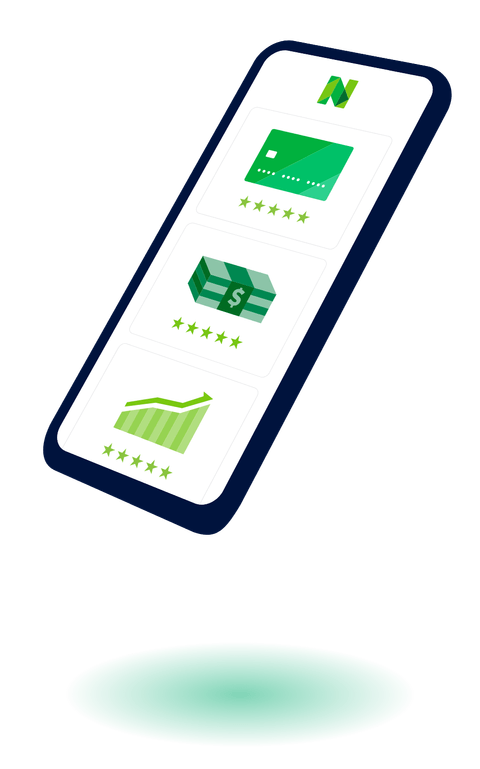How to Write a Business Plan, Step by Step
A well-written business plan should include details about your business's goals, products or services, and finances.
Many, or all, of the products featured on this page are from our advertising partners who compensate us when you take certain actions on our website or click to take an action on their website. However, this does not influence our evaluations. Our opinions are our own. Here is a list of our partners and here's how we make money.
A business plan outlines your business’s financial goals and explains how you’ll achieve them over the next three to five years. Here’s a step-by-step guide to writing a business plan that will offer a strong, detailed road map for your business.
What is a business plan?
A business plan is a document that explains what your business does, how it makes money and who its customers are. Internally, writing a business plan should help you clarify your vision and organize your operations. Externally, you can share it with potential lenders and investors to show them you’re on the right track.
Business plans are living documents; it’s OK for them to change over time. Startups may update their business plans often as they figure out who their customers are and what products and services fit them best. Mature companies might only revisit their business plan every few years. Regardless of your business’s age, brush up this document before you apply for a business loan.
1. Write an executive summary
This is your elevator pitch. It should include a mission statement, a brief description of the products or services your business offers and a broad summary of your financial growth plans.
Though the executive summary is the first thing your investors will read, it can be easier to write it last. That way, you can highlight information you’ve identified while writing other sections that go into more detail.

2. Describe your company
Next up is your company description. This should contain basic information like:
- Your business’s registered name.
- Address of your business location.
- Names of key people in the business. Make sure to highlight unique skills or technical expertise among members of your team.
Your company description should also define your business structure — such as a sole proprietorship, partnership or corporation — and include the percent ownership that each owner has and the extent of each owner’s involvement in the company.
Lastly, write a little about the history of your company and the nature of your business now. This prepares the reader to learn about your goals in the next section.
Smart money moves for your business
Grow your small business with tailored insights, recommendations, and expert content.

3. State your business goals
The third part of a business plan is an objective statement. This section spells out what you’d like to accomplish, both in the near term and over the coming years.
If you’re looking for a business loan or outside investment, you can use this section to explain how the financing will help your business grow and how you plan to achieve those growth targets. The key is to provide a clear explanation of the opportunity your business presents to the lender.
For example, if your business is launching a second product line, you might explain how the loan will help your company launch that new product and how much you think sales will increase over the next three years as a result.
4. Describe your products and services
In this section, go into detail about the products or services you offer or plan to offer.
You should include the following:
- An explanation of how your product or service works.
- The pricing model for your product or service.
- The typical customers you serve.
- Your supply chain and order fulfillment strategy.
You can also discuss current or pending trademarks and patents associated with your product or service.
5. Do your market research
Lenders and investors will want to know what sets your product apart from your competition. In your market analysis section, explain who your competitors are. Discuss what they do well, and point out what you can do better. If you’re serving a different or underserved market, explain that.
6. Outline your marketing and sales plan
Here, you can address how you plan to persuade customers to buy your products or services, or how you will develop customer loyalty that will lead to repeat business.
Include details about your sales and distribution strategies, including the costs involved in selling each product.
How much do you need?
We'll start with a brief questionnaire to better understand the unique
needs of your business.
Once we uncover your personalized matches, our team will consult you
on the process moving forward.
Find the right loan for your business
Tell us how much you need and see your options in minutes.7. Perform a business financial analysis
If you’re a startup, you may not have much information on your business financials yet. However, if you’re an existing business, you’ll want to include income or profit-and-loss statements, a balance sheet that lists your assets and debts, and a cash flow statement that shows how cash comes into and goes out of the company.
Accounting software may be able to generate these reports for you. It may also help you calculate metrics such as:
- Net profit margin: the percentage of revenue you keep as net income.
- Current ratio: the measurement of your liquidity and ability to repay debts.
- Accounts receivable turnover ratio: a measurement of how frequently you collect on receivables per year.
This is a great place to include charts and graphs that make it easy for those reading your plan to understand the financial health of your business.
8. Make financial projections
This is a critical part of your business plan if you’re seeking financing or investors. It outlines how your business will generate enough profit to repay the loan or how you will earn a decent return for investors.
Here, you’ll provide your business’s monthly or quarterly sales, expenses and profit estimates over at least a three-year period — with the future numbers assuming you’ve obtained a new loan.
Accuracy is key, so carefully analyze your past financial statements before giving projections. Your goals may be aggressive, but they should also be realistic.
9. Summarize how your company operates
Before the end of your business plan, summarize how your business is structured and outline each team’s responsibilities. This will help your readers understand who performs each of the functions you’ve described above — making and selling your products or services — and how much each of those functions cost.
If any of your employees have exceptional skills, you may want to include their resumes to help explain the competitive advantage they give you.
NerdWallet’s picks for setting up your business finances:
10. Add any additional information to an appendix
Finally, attach any supporting information or additional materials that you couldn’t fit in elsewhere. That might include:
- Licenses and permits.
- Patents.
- Equipment leases.
- Contracts.
- Bank statements.
- Details of your personal and business credit history, if you’re seeking financing.
If the appendix is long, you may want to consider adding a table of contents at the beginning of this section.
Business plan tips and resources
Here are some tips to write a detailed, convincing business plan:
Avoid over-optimism: If you’re applying for a business bank loan or professional investment, someone will be reading your business plan closely. Providing unreasonable sales estimates can hurt your chances of approval.
Proofread: Spelling, punctuation and grammatical errors can jump off the page and turn off lenders and prospective investors. If writing and editing aren't your strong suit, you may want to hire a professional business plan writer, copy editor or proofreader.
Use free resources: SCORE is a nonprofit association that offers a large network of volunteer business mentors and experts who can help you write or edit your business plan. The U.S. Small Business Administration’s Small Business Development Centers, which provide free business consulting and help with business plan development, can also be a resource.
Article sources
NerdWallet writers are subject matter authorities who use primary,
trustworthy sources to inform their work, including peer-reviewed
studies, government websites, academic research and interviews with
industry experts. All content is fact-checked for accuracy, timeliness
and relevance. You can learn more about NerdWallet's high
standards for journalism by reading our
editorial guidelines.
Related articles








